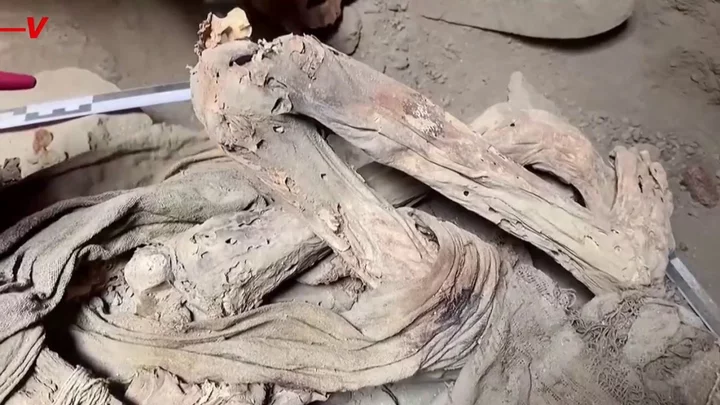Scientists baffled by discovery of completely mummified man just 16 days after he was last seen alive
Warning: This article does contain images some readers might find disturbing. Investigators have been left puzzled after finding a man’s body in a stage of “complete mummification” just 16 days after he was last seen alive. The man was found alongside a railway line in Bulgaria on 3 September. Identity checks later found he was 34 when he died, with a history of alcoholism, and was last seen alive on 16 August. However, his insides had been reduced to “structureless masses”, and case workers have been unable to explain how the body reached such an advanced state of mummification so quickly. A report published in Cureus journal shows a full set of pictures of the corpse – linked at the foot of this article. Trigger warning, they’re pretty gruesome. It has got scientists fascinated though. The report’s authors reveal that the “skin surface showed coloration ranging from light to dark brown, and it was hard and leathery.” “The internal examination of the body showed that the internal organs in the cranial, thoracic, and abdominal cavities had decayed into dried, brownish-black masses,” they write. Researchers stressed that natural mummification “usually takes several weeks to 6-12 months”, and that such a fast transformation would only normally happen in extreme heat. The temperature in Sofia has ranged from 16 to 33 degrees Celsius in the time period, which scientists said is not hot enough. The authors speculated that passing trains could have created a windy environment that could have contributed to drying out the body and causing bodily fluids to evaporate. They said it almost certainly wasn’t the weather in Sofia that caused the bizarrely fast mummification process. As of yet, it remains a mystery. Here’s the journal article. Sign up to our free Indy100 weekly newsletter Have your say in our news democracy. Click the upvote icon at the top of the page to help raise this article through the indy100 rankings.
Warning: This article does contain images some readers might find disturbing.
Investigators have been left puzzled after finding a man’s body in a stage of “complete mummification” just 16 days after he was last seen alive.
The man was found alongside a railway line in Bulgaria on 3 September. Identity checks later found he was 34 when he died, with a history of alcoholism, and was last seen alive on 16 August.
However, his insides had been reduced to “structureless masses”, and case workers have been unable to explain how the body reached such an advanced state of mummification so quickly.
A report published in Cureus journal shows a full set of pictures of the corpse – linked at the foot of this article. Trigger warning, they’re pretty gruesome.
It has got scientists fascinated though. The report’s authors reveal that the “skin surface showed coloration ranging from light to dark brown, and it was hard and leathery.”
“The internal examination of the body showed that the internal organs in the cranial, thoracic, and abdominal cavities had decayed into dried, brownish-black masses,” they write.
Researchers stressed that natural mummification “usually takes several weeks to 6-12 months”, and that such a fast transformation would only normally happen in extreme heat.
The temperature in Sofia has ranged from 16 to 33 degrees Celsius in the time period, which scientists said is not hot enough.
The authors speculated that passing trains could have created a windy environment that could have contributed to drying out the body and causing bodily fluids to evaporate.
They said it almost certainly wasn’t the weather in Sofia that caused the bizarrely fast mummification process.
As of yet, it remains a mystery. Here’s the journal article.
Sign up to our free Indy100 weekly newsletter
Have your say in our news democracy. Click the upvote icon at the top of the page to help raise this article through the indy100 rankings.









